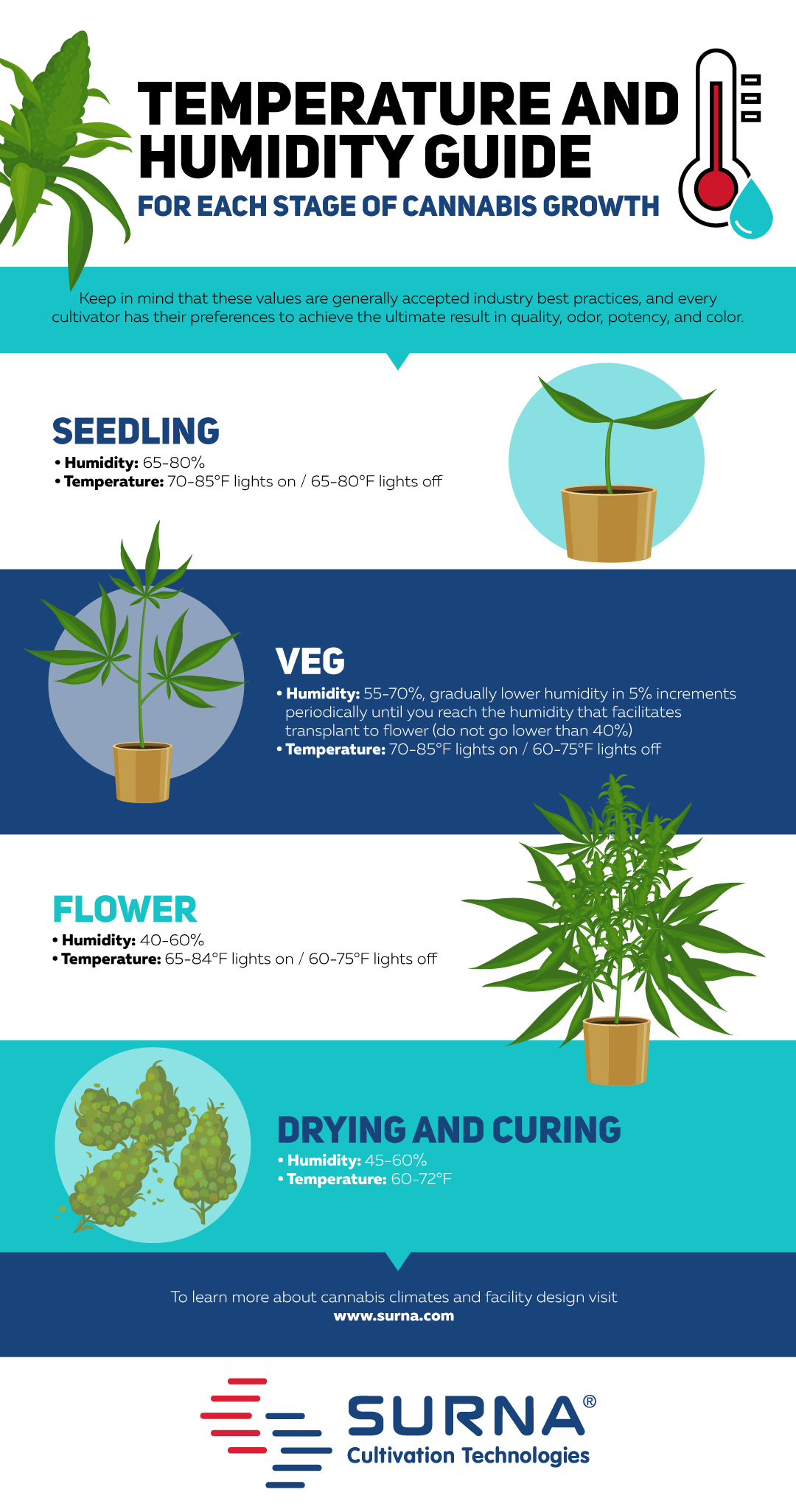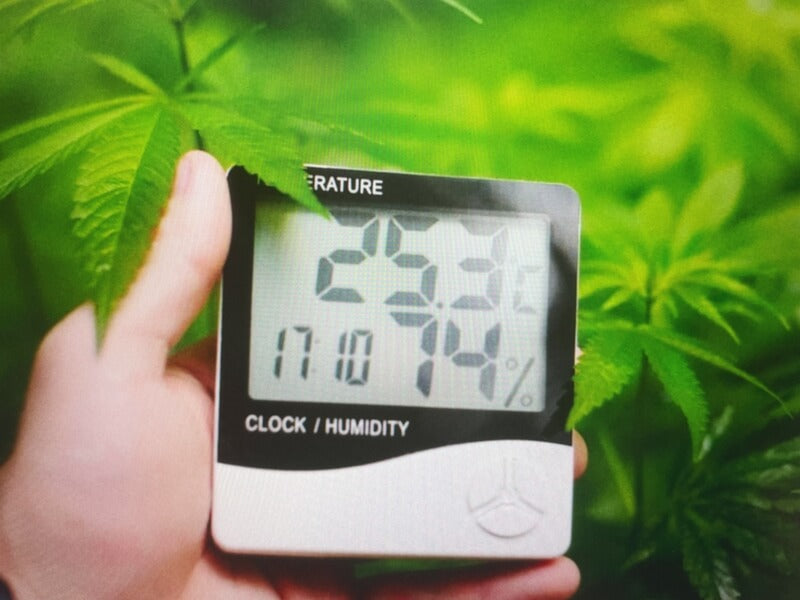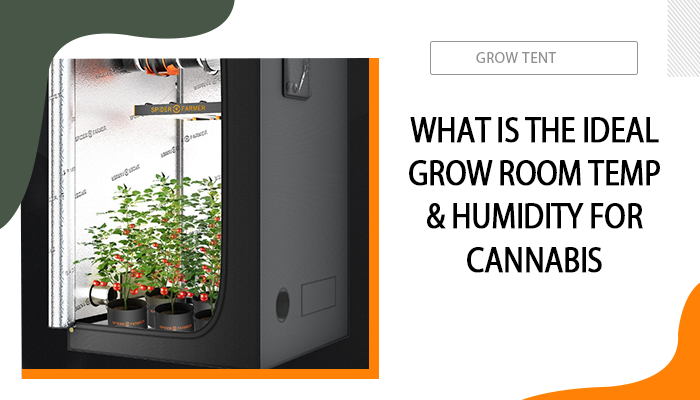Control temperature and humidity in a grow tent by using a combination of fans, heaters, and humidifiers. Monitor conditions with a reliable thermometer and hygrometer for optimal results.
Creating an ideal environment in a grow tent is crucial for healthy plant growth. Temperature and humidity directly impact photosynthesis, nutrient uptake, and overall plant health. Variations in these factors can lead to stress, disease, or even plant failure. Growers need to maintain a balance for optimal growth.
Utilizing tools like exhaust fans, heaters, and humidifiers can help manage these variables effectively. Regular monitoring ensures you catch fluctuations early. Understanding the specific needs of your plants will further guide your adjustments. A stable environment promotes robust growth and maximizes your harvest potential.

Credit: surna.com
How to Control Temperature And Humidity in Grow Tent : Step by Step Guide
Introduction To Grow Tents
Grow tents are special spaces for plants. They provide a controlled environment. Temperature and humidity affect plant health.
Proper climate control helps plants grow strong. Too much heat can harm plants. Low humidity can cause stress.
Plants thrive in specific temperature ranges. Most prefer between 70°F and 85°F. Humidity levels should stay between 40% and 60%.
Using fans and heaters can help maintain temperature. Humidifiers or dehumidifiers adjust humidity levels. Monitoring tools help keep track of these factors.
Fundamentals Of Temperature And Humidity
Maintaining the right temperature and humidity is crucial for plant health. Most plants thrive at a temperature of 70°F to 85°F during the day. Nighttime temperatures should be slightly lower, around 60°F to 70°F.
Ideal humidity levels range from 40% to 60%. High humidity can lead to mold and fungus. Low humidity may cause stress and slow growth.
Fluctuations in temperature and humidity can harm plants. Sudden changes can lead to wilting or even death. Consistent conditions promote stronger and healthier plants.
Monitoring Tools And Equipment
Monitoring temperature and humidity is important for plant health. Thermometers measure air temperature. They help ensure optimal growing conditions. Hygrometers measure humidity levels. Proper humidity prevents mold and helps plants thrive.
Many growers use digital thermometers and hygrometers. These devices provide accurate readings. Some models have alerts for extreme conditions.
| Tool | Purpose | Features |
|---|---|---|
| Thermometer | Measures temperature | Digital display, alarm function |
| Hygrometer | Measures humidity | Analog or digital, easy to read |
Automated control systems make managing conditions easier. They adjust temperature and humidity automatically. This technology saves time and ensures stable environments.
Some systems include fans, heaters, and humidifiers. These devices work together to create the perfect climate for plants.

Credit: hgshydro.com
Strategies For Temperature Regulation
Proper ventilation is key for a successful grow tent. Use exhaust fans to remove hot air. Intake fans can bring in fresh air. Ensure that air moves freely inside the tent.
For heating, consider using a small space heater. Place it safely away from plants. Cooling can be achieved with air conditioners or cooling fans. These tools help maintain a steady temperature.
Monitor both temperature and humidity with a digital hygrometer. Aim for a temperature of 70-80°F and humidity around 40-60%. Adjust fans or heaters as needed to achieve these levels.
Humidity Control Techniques
Using dehumidifiers can help control humidity in your grow tent. These devices remove excess moisture from the air. Choose a model that fits your tent size. Set it to maintain ideal humidity levels, typically between 40-60%.
Humidifier integration is also important. A humidifier adds moisture when levels drop too low. Look for an adjustable humidifier for better control. Use a hygrometer to monitor humidity levels. This ensures your plants grow in the best conditions.
| Device Type | Function |
|---|---|
| Dehumidifier | Reduces excess moisture |
| Humidifier | Adds moisture |
| Hygrometer | Monitors humidity levels |

Credit: cultiuana.com
Lighting And Its Impact
Choosing the right lights is crucial for your grow tent. LED lights are energy-efficient and produce less heat. HID lights give off more heat but offer high intensity. Select lights based on your plants’ needs. For example, seedlings need less light than flowering plants.
Light schedules greatly impact heat production. Daytime temperatures can rise with longer light periods. Use a timer to control light duration. Shorter light schedules help maintain cooler temperatures. Consider using reflectors to maximize light without adding heat.
Advanced Tips For Optimization
Control CO2 levels for better plant growth. Use CO2 tanks or generators. This helps plants absorb more nutrients.
Seasonal changes affect temperature and humidity. Adjust your grow tent settings as seasons change. Use a thermostat to monitor temperature.
During summer, keep the tent cooler. Use fans or air conditioners. In winter, add heaters to maintain warmth.
Humidity levels should be monitored regularly. Use a hygrometer to check humidity. Increase humidity with a misting system or humidifier.
Lower humidity can be achieved with dehumidifiers. Proper ventilation is key to control humidity and temperature.
Troubleshooting Common Issues
Controlling temperature and humidity is essential for plant health. Pests and diseases can harm your plants. Regularly check for signs of infestations. Use natural solutions like neem oil or insecticidal soap. Keep your tent clean to prevent problems.
Extreme climate conditions can stress plants. Use fans for airflow to reduce humidity. Install a heater or cooler to manage temperature. Monitor conditions with a hygrometer and thermometer. Adjust settings based on plant needs.
| Issue | Solution |
|---|---|
| Pests | Use neem oil or insecticidal soap |
| Diseases | Maintain cleanliness and airflow |
| High Humidity | Use fans and dehumidifiers |
| Low Temperature | Install heaters and adjust settings |
Frequently Asked Questions
How Can I Maintain Optimal Humidity In My Grow Tent?
To maintain optimal humidity in your grow tent, use a hygrometer to monitor levels. Invest in a dehumidifier or humidifier based on your needs. Additionally, proper ventilation helps regulate humidity. Keep the tent sealed to avoid external influences, ensuring a stable environment for your plants.
What Temperature Is Ideal For A Grow Tent?
The ideal temperature for a grow tent typically ranges between 70°F to 85°F (20°C to 29°C). This range promotes healthy plant growth and prevents stress. Adjust your heating or cooling devices accordingly. Regularly check temperatures, especially during lights-on and lights-off periods for optimal results.
How Do I Control Temperature Fluctuations In My Grow Tent?
To control temperature fluctuations, use fans for air circulation. Employ thermostats and timers to automate heating and cooling. Insulate your tent properly to maintain stable temperatures. Regular monitoring with a thermometer ensures you catch any issues early, providing a consistent environment for your plants.
Can I Use Air Conditioning In A Grow Tent?
Yes, using air conditioning in a grow tent is effective. It helps maintain cooler temperatures, especially in warmer climates. Choose a portable unit that fits your space. Ensure proper ventilation to prevent excess humidity, creating an ideal environment for plant growth.
Conclusion
Mastering temperature and humidity control in your grow tent is essential for healthy plants. Use tools like hygrometers and fans for optimal conditions. Regular monitoring and adjustments can lead to better growth and yields. With the right strategies, your indoor garden will thrive, ensuring a successful and rewarding experience.
Happy growing!

